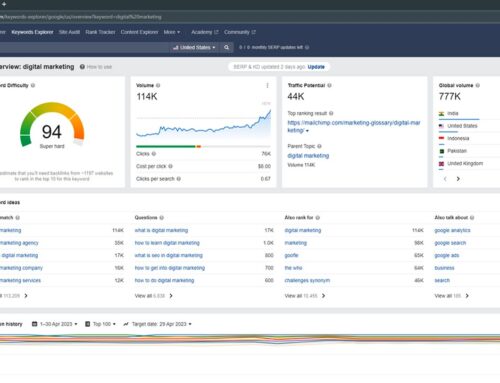In this guide, we will delve deep into the world of consumer behavior and understand the factors that influence your customers’ purchasing decisions. Understanding these triggers is essential for any business looking to increase its sales and improve its marketing strategies. By the end of this article, you will have gained insights into various techniques and approaches that can help you uncover the motivations behind your customers’ buying habits.
Table of Contents
- Introduction
- Understanding Customer Behavior
- Psychological Triggers
- Demographic and Geographic Factors
- Market Research Techniques
- Data Analytics and Customer Profiling
- A/B Testing
- Final Thoughts
- Sources
Introduction
The key to success in any business lies in understanding its customers, their preferences, and their purchasing behaviors. By uncovering the factors that influence their decisions, businesses can tailor their marketing strategies to target the right audience, at the right time, and with the right message. In today’s increasingly competitive marketplace, businesses need to be agile and responsive to their customers’ needs in order to stay ahead of the curve.
This article will guide you through the process of figuring out what triggers your customers to buy. We will explore different aspects of customer behavior, including psychological triggers, demographic and geographic factors, as well as the role of market research techniques in identifying these triggers. We will also discuss the importance of data analytics and customer profiling, and how A/B testing can be used to fine-tune your marketing strategies.
By the end of this article, you will have a better understanding of what drives your customers’ buying decisions, and how you can leverage this knowledge to create more effective marketing campaigns.
Understanding Customer Behavior
Customer behavior is a complex interplay of factors that influence how individuals make purchasing decisions. These factors can be broadly categorized into external and internal influences. External factors include the economic environment, cultural norms, and social influences, while internal factors include an individual’s personality, emotions, and values.
In order to figure out what triggers your customers to buy, you need to delve deep into their psyche and understand how these factors come together to shape their purchasing decisions.
Psychological Triggers
Psychological triggers are deeply rooted in human behavior and can have a powerful impact on an individual’s decision-making process. Some common psychological triggers that influence purchasing decisions include:
- Scarcity: When a product or service is perceived as rare or limited, it becomes more desirable.
- Social Proof: People are more likely to buy a product if they see others using it or endorsing it.
- Authority: Buyers are more likely to trust and follow recommendations from experts or authority figures.
- Reciprocity: When people receive something for free or at a discount, they feel obligated to return the favor, often by making a purchase.
- Consistency: Customers are more likely to make a purchase if it aligns with their existing beliefs, values, or past behaviors.
Demographic and Geographic Factors
Understanding the demographic and geographic factors that influence your customers’ purchasing decisions is crucial in tailoring your marketing efforts. Some key factors to consider include age, gender, income level, education, occupation, and location. By segmenting your target audience based on these factors, you can create more targeted and effective marketing campaigns.
For example, a luxury clothing brand might target high-income individuals with a certain level of education, while a fast-food chain might target young adults in urban areas. By understanding the demographic and geographic factors that influence your customers, you can better tailor your messaging and offerings to meet their specific needs and preferences.
Market Research Techniques
Market research is an invaluable tool for businesses looking to uncover the triggers behind their customers’ purchasing decisions. Various market research techniques can be employed to gather insights about your target audience and their preferences. Some popular techniques include:
Surveys
Surveys are a widely-used method for collecting data from a large number of people. They can be conducted through various channels, such as online, phone, or in-person interviews. Surveys allow you to gather quantitative data on your customers’ preferences, opinions, and buying habits, which can help you identify trends and patterns in their behavior.
Focus Groups
Focus groups involve gathering a small group of people to discuss a specific topic or product. This method allows you to collect qualitative data on your customers’ attitudes, preferences, and motivations. Focus groups can help you gain insights into the emotional and psychological triggers that drive purchasing decisions, as well as uncover any potential barriers to purchase.
In-Depth Interviews
In-depth interviews involve one-on-one conversations with customers or potential customers to gain a deeper understanding of their needs, preferences, and motivations. This method is particularly useful for uncovering the emotional and psychological factors that influence purchasing decisions, as well as identifying any unmet needs or potential gaps in your product offerings.
Observation and Ethnography
Observation and ethnography involve studying your customers in their natural environment to understand their behavior and decision-making processes. This method can help you identify the contextual factors that influence purchasing decisions, such as the role of the physical environment, social interactions, and cultural norms.
Data Analytics and Customer Profiling
With the advent of big data and advanced analytics tools, businesses now have access to a wealth of information about their customers. By analyzing this data, you can create detailed customer profiles that can help you better understand their preferences, habits, and motivations. This information can be used to create more personalized and targeted marketing campaigns, as well as inform product development and pricing strategies.
A/B Testing
A/B testing involves creating two or more variations of a marketing element, such as a website, email, or advertisement, and testing their performance against each other. This method can help you identify the most effective marketing strategies and uncover the specific triggers that drive your customers to buy. By continuously testing and refining your marketing efforts, you can improve your overall conversion rates and sales.
Final Thoughts
Understanding what triggers your customers to buy is essential for creating effective marketing strategies and driving sales. By exploring psychological triggers, demographic and geographic factors, and utilizing market research techniques, data analytics, and A/B testing, you can gain valuable insights into your customers’ preferences and motivations. This knowledge can be leveraged to create targeted and personalized marketing campaigns that resonate with your audience and ultimately, increase sales.
Sources
- Cialdini, R. B. (2006). Influence: The psychology of persuasion. New York: Harper Business.
- Kotler, P., & Keller, K. L. (2016). Marketing Management (15th ed.). Upper Saddle River, NJ: Pearson.
- Malhotra, N. K., Birks, D. F., & Wills, P. (2012). Marketing Research: An Applied Orientation (6th ed.). Harlow, England: Pearson
- Solomon, M. R. (2020). Consumer Behavior: Buying, Having, and Being (13th ed.). New York: Pearson.
- Wedel, M., & Kamakura, W. A. (2012). Market Segmentation: Conceptual and Methodological Foundations (2nd ed.). Boston, MA: Springer.
By continuing to expand your knowledge and understanding of your customers’ behavior, you can stay ahead of the competition and ensure that your marketing efforts are both efficient and effective. It is important to be open to new market research techniques, as well as continually refining your strategies based on data-driven insights.
Remember that understanding your customers is an ongoing process, and there is always room for improvement. By staying committed to learning about your customers and adapting your strategies accordingly, you can continue to grow and thrive in an increasingly competitive market.
In conclusion, taking the time to understand the factors that drive your customers to buy is crucial for success in any business. By leveraging psychological triggers, demographic and geographic factors, market research techniques, data analytics, and A/B testing, you can create a more targeted and personalized approach to your marketing efforts. This knowledge will ultimately help you build stronger relationships with your customers, boost sales, and ensure the continued growth and success of your business.










